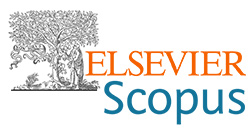Removal of bemacid red dye by adsorption on sawdust and carbonized sawdust
DOI:
https://doi.org/10.5937/zasmat2301065DAbstract
Today, huge amounts of coloured wastewater, released into ecosystems are a big problem, because they have harmful effects on humans, the environment, as well as the aquatic environment. One of the common treatments for removing dyes from wastewater is the adsorption process, with an emphasis on the use of cheap adsorbents. Therefore, the subject of this paper is the possibility of removing the anionic dye bemacid red (BR) on wood biomass sawdust and carbonized sawdust. The experiments examined the equilibrium contact time, the effect of initial pH, the effect of adsorbent dose, as well as the effect of the initial adsorbate concentration on the process of adsorption. By applying linear kinetic models, it was found that the adsorption process follows a pseudo-second-order kinetic model. It was found that pH does not have a significant effect on adsorption onto carbonized sawdust. By examining the effect of the initial adsorbent dose, it was found that optimal adsorption requires twice the mass of sawdust compared to carbonized sawdust. The use of linear adsorption isotherms shows better agreement with the Freundlich model for both adsorbents. The maximum adsorption capacity for sawdust is 30.18 mg/kg, while for carbonized sawdust it is 74.60 mg/kg. Use of sawdust and carbonized sawdust can be an effective adsorbent for removing the dye bemacid red from wastewater, which is confirmed by the experiment on a real sample of wastewater. The obtained efficiency of dye removal from real wastewater for sawdust is 42.9 %, and for carbonized sawdust 95.1 %.Keywords:
bemacid red, adsorption, wood sawdust, carbonized sawdustReferences
Acemioğlu, B., Karataş, N., Güler, M.H., Ertaş, M., Alma, M.H. (2019) Adsorption of basic red 2 dye by activated biomass charcoal in batch and column systems.International Journal of Chemistry and Technology, 3(2): 136-145
https://doi.org/10.32571/ijct.650476
Bortoluz, J., Ferrarini, F., Bonetto, L.R., da Silva, C.J., Giovanela, M. (2020) Use of low-cost natural waste from the furniture industry for the removal of methylene blue by adsorption: Isotherms, kinetics and thermodynamics.Cellulose, 27: 6445-6466
https://doi.org/10.1007/s10570-020-03254-y
Boudia, R., Mimanne, G., Benhabib, K., Pirault-Roy, L. (2019) Preparation of mesoporous activated carbon from date stones for the adsorption of bemacid red.Water Science and Technology, 79(7): 1357-1366
https://doi.org/10.2166/wst.2019.135
Chergui, Y., Iddou, A., Hentit, H., Aziz, A., Jumas, J.C. (2019) Biosorption of textile dye red bemacid etl using activated charcoal of grape marc (oenological by-product).Key Engineering Materials, 800: 151-156
https://doi.org/10.4028/www.scientific.net/KEM.800.151
Chikri, R., Elhadiri, N., Benchanaa, M., El, M.Y. (2020) Efficiency of sawdust as low-cost adsorbent for dyes removal.Journal of Chemistry, ID 8813420; 17
https://doi.org/10.1155/2020/8813420
Duta, A., Visa, M. (2015) Simultaneous removal of two industrial dyes by adsorption and photocatalysis on a fly-ash-TiO2 composite.Journal of Photochemistry and Photobiology A: Chemistry, 306: 21-30
https://doi.org/10.1016/j.jphotochem.2015.03.007
Dutta, S., Gupta, B., Srivastava, S.K., Gupta, A.K. (2021) Recent advances on the removal of dyes from wastewater using various adsorbents: A critical review.Materials Advances, 2(14): 4497-4531
https://doi.org/10.1039/D1MA00354B
Fekaouni, A., Henini, G., Laidani, Y. (2022) Evaluation of Opuntia Ficus indica as an economic adsorbent for anionic red bemacid dye from aqueous solution.Cellulose Chemistry and Technology, 56(3-4): 427-442
https://doi.org/10.35812/CelluloseChemTechnol.2022.56.37
https://www.cellulosechemtechnol.ro/pdf/ CCT3-4(2022)/p.427-442.pdf
Ferrero, F. (2007) Dye removal by low cost adsorbents: Hazelnut shells in comparison with wood sawdust.Journal of Hazardous Materials, 142(1-2): 144-152
https://doi.org/10.1016/j.jhazmat.2006.07.072
Foo, K.Y., Hameed, B.H. (2010) An overview of dye removal via activated carbon adsorption process.Desalination and Water Treatment, 19: 255-274
https://doi.org/10.5004/dwt.2010.1214
Gupta, V., Agarwal, A., Singh, M.K., Singh, N.B. (2019) Kail sawdust charcoal: A low-cost adsorbent for removal of textile dyes from aqueous solution.SN Applied Sciences, 1(10): 1271-1271
https://doi.org/10.1007/s42452-019-1252-3
Morão, L.G., Dilarri, G., Corso, C.R. (2017) An approach to textile dye removal using sawdust from Aspidosperma polyneuron.International Journal of Environmental Studies, 74(1): 75-85
https://doi.org/10.1080/00207233.2016.1236651
Ouazani, F., Iddou, A., Aziz, A. (2017) Biosorption of bemacid red dye by brewery waste using single and poly-parametric study.Desalination and Water Treatment, 93: 171-179
https://doi.org/10.5004/dwt.2017.21413
Ouazani, F., Chergui, Y., Benhammadi, S., Saidi, A.F.Z. (2022) Three level design to estimate dyes adsorption parameters using oenological byproduct as adsorbent.Journal of Environmental Treatment Techniques, 10(1): 134-142
Ouazani, F., Benchekor, H., Chergui, Y., Iddou, A., Aziz, A. (2020) Linearized form effect on estimation adsorption parameters of three industrial dyes by lignocellulosic sorbent.Journal of Environmental Health Science and Engineering, 18(2): 1045-1055
https://doi.org/10.1007/s40201-020-00526-4
Rahman, N.U., Ullah, I., Alam, S., Khan, M.S., Shah, L.A., Zekker, I., Burlakovs, J., Kallistova, A., Pimenov, N., Vincevica-Gaile, Z., Jani, Y., Zahoor, M. (2021) Activated ailanthus altissima sawdust as adsorbent for removal of acid yellow 29 from wastewater: Kinetics approach.Water, 13(15): ID 2136
https://doi.org/10.3390/w13152136
Saha, T.K., Bishwas, R.K., Karmaker, S., Islam, Z. (2020) Adsorption characteristics of allura red ac onto sawdust and hexadecylpyridinium bromide-treated sawdust in aqueous solution.ACS Omega, 5(22): 13358-13374
https://doi.org/10.1021/acsomega.0c01493
Suteu, D., Bilba, D., Zaharia, C., Popescu, A. (2008) Colloque Franco-Roumain de Chimie Appliquée, Bacău, Romania, proceedings. 293-302; fifth edition; https://www.researchgate.net/publication/ 267394345_Removal_of_dyes_from_textile_waste water_by_sorption_onto_ligno-cellulosic_materials
Tran, H.N., You, S.H., Hosseini-Bandegharaei, A., Chao, H. (2017) Mistakes and inconsistencies regarding adsorption of contaminants from aqueous solutions: A critical review.Water Research, 120: 88-116
Downloads
Published
Issue
Section
License
Copyright (c) 2023 CC BY 4.0 by Authors

This work is licensed under a Creative Commons Attribution 4.0 International License.






